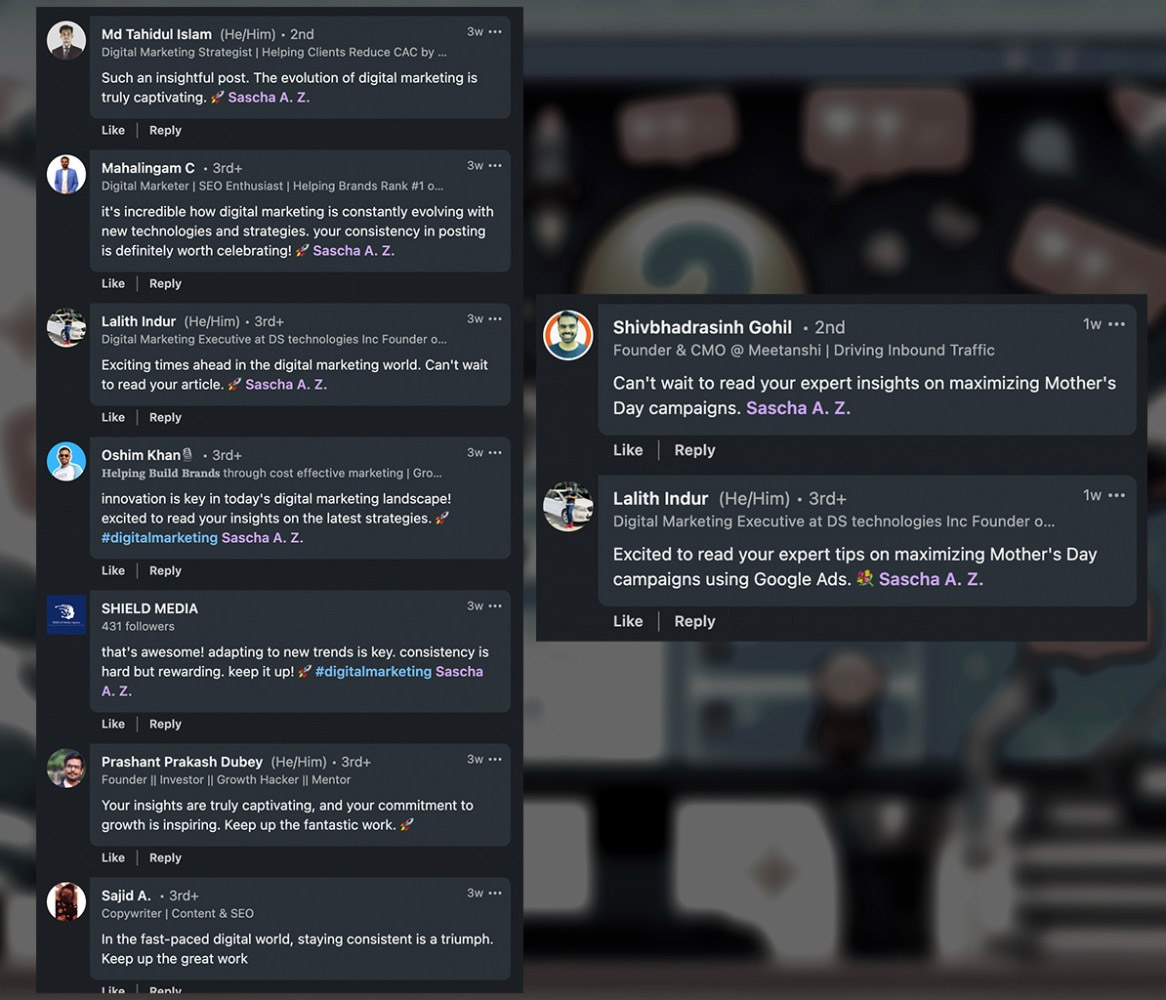I started writing an article every week on LinkedIn to share shorter versions of my writeups on my personal blog (that’s this one right here). I don’t actually promote or even share my blog however (no plans to change that at this time either); it’s more like a personal log for myself… a semi-annonymous PLOG if you will (I am sorry, no, I know where the door is, I’ll see myself out). While I use it to tie into specifici topics like my videos on YouTube, it’s not really something I want to share in the professional realm, like my LinkedIn profile. Especially not now, that I’ve stopped doing almost everything on LinkedIn after my experiment concluded. So today, it’s the other way around. This was a LinkedIn exclusive article and for the forseeable future, also my last article on LinkedIn, that I’ve now slightly modified to go on my blog instead.
Since I spend a lot of time on all of this (Scripting, Editing, Optimisng, etc.), I thought, “I know how to work YouTube’s and Instagram’s algorithms fairly well at this point, but I have no real clue about how LinkedIn works.” and that was when I decided to shorten my writeups, specifically for LinkedIn and publish them there to see what happens. Unfortunately, it turned out to be a waste of time.
Starting on a new platform or changing your goals on one with an already existing profile is always hard at first. It’s like climbing Mount Cringemore, which can feel awkward and embarrassing, which isn’t something that should make you stop. The awkwardness is part of the process. The idea is that you have to go through this initial phase of discomfort to eventually find your footing. Now this whole thought process is almost innate to me at this point thanks to both YouTube, IG, Twitch and even TikTok to a degree. I didn’t expect however that most of the comments I would get on LinkedIn were probably, eh, are most definitely generated by AI. Many comments used the same emoji “🚀” and sounded very similar, saying things like they couldn’t wait to learn more about what I wrote. Keep in mind, that this emoji has been a clear sign for years now that the comment is likely auto-generated. If you’re a real person, you might want to avoid using that emoji. When commenting, maybe tell the AI not to use emoji specifically.

I’ve started ignoring any article, post, or comment with that emoji in it. It was very clear that “people” were commenting without reading the content. It’s jarring that they would use AI to comment and not even use it properly to pretend they’ve read it. I swear that’s a “skill” you should’ve learned in school, way before AI even was a thing. The whole point of engagement is to connect and discuss genuinely, not to spam with generic responses. So at least do your job properly and instruct your AI to try and fool the person you’re engaging with. Granted, problematic advice, but it is what it is. Honestly though, while the practice itself could be disheartening, to me it’s more disheartening to see how bad the majority of people are at using AI, or rather that they barely even understand how to use it. Just to be clear though, I am not saying you shouldn’t use AI, far from it. The image at the top was AI generated, I’ve sent this entire write up into ChatGPT-4o several times to look for errors (grammar, spelling, logical fallacies, etc.) as well. In fact, please use it more AND learn how to use it. No one requires you to be a master at it, neither am I, but at the very least stop incriminating yourself. On the subject of grammar and spelling, there are probably still some errors in here, as I tend to change things around one last time, right before posting. It’s a bad habit, I know.
To be fair, I was also recycling my content in my little experiment here, so I’m not judging anyone for being lazy. I’ve written half the book on it, then I got bored and did something else, of course… This bit about recycling content was meant to ensure I was getting the most out of my research and ideas, whilst at the same time learning more about LinkedIn’s functionality. As it stands right now, it’s not very interesting to me. It seems that authentic engagement is not just rare, but wholly overshadowed by the crackbrained use of AI-generated fluff. I’ve finished most of my LinkedIn experiments that I was interested in at that point. So, I’ll leave the data collection on LinkedIn to people who actually like using it, and I mean that genuinely.
In conclusion, while LinkedIn might be a valuable tool for some, it hasn’t proven to be the right fit for me at this time. Connecting, yes, but content creation, no! I can see one of two things happening now for this post – no engagement at all, oooor lots of comments with rockets, un- and ironically!
Spoilers: On LinkedIn there was barely any interaction, which wasn’t a surprise given the subject matter.
Note: The featured image at the top of this blog post is AI-generated.

Leave a Reply